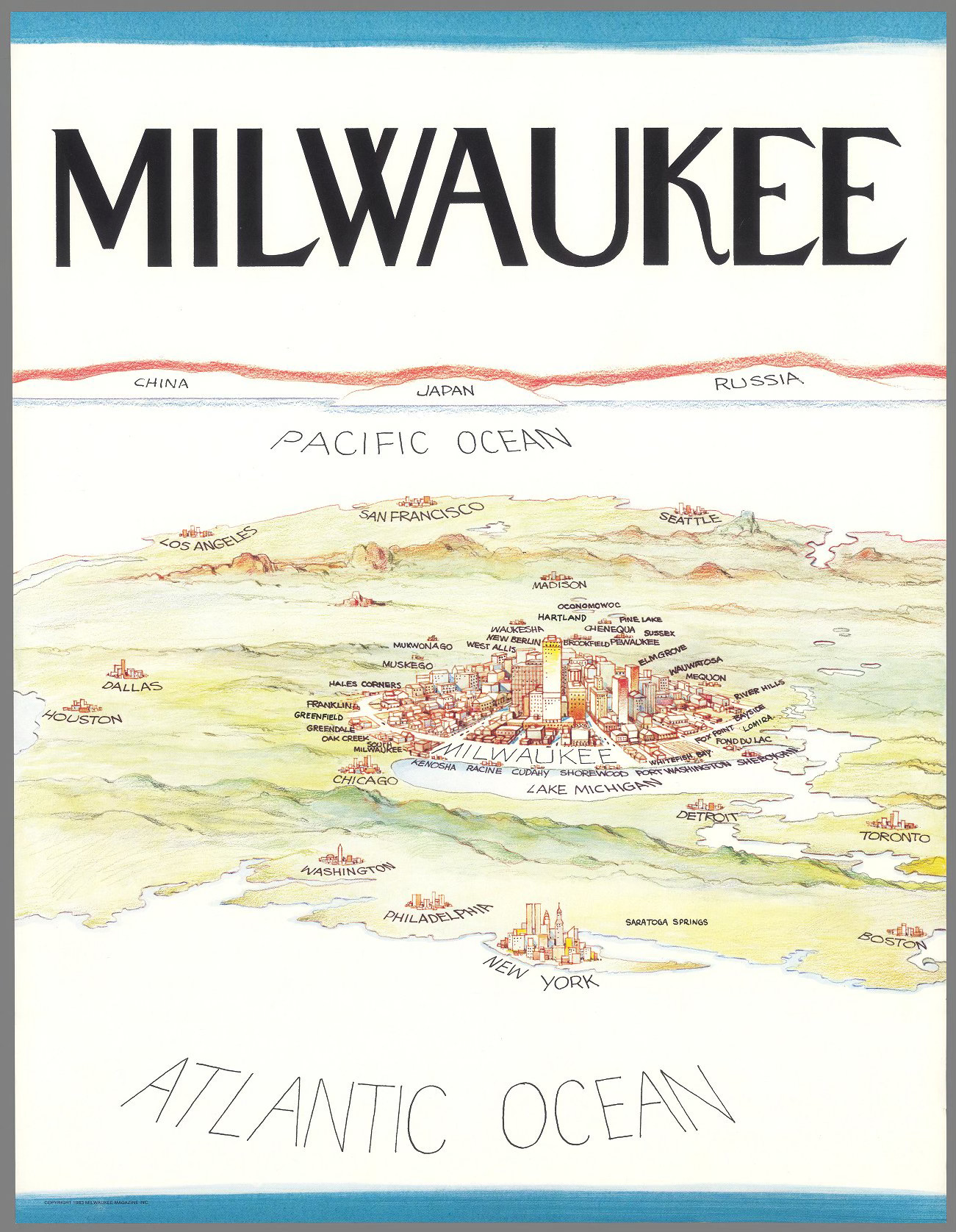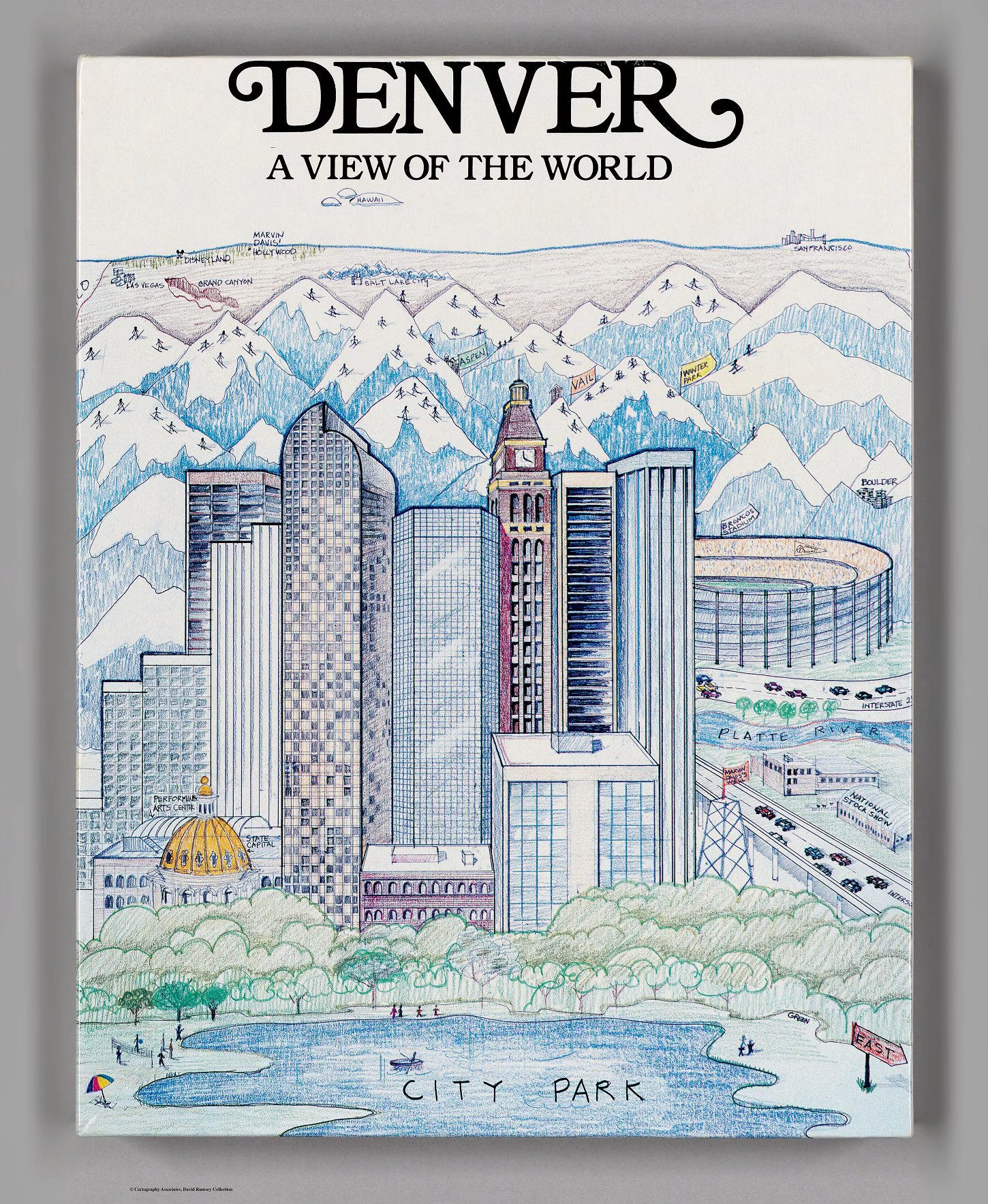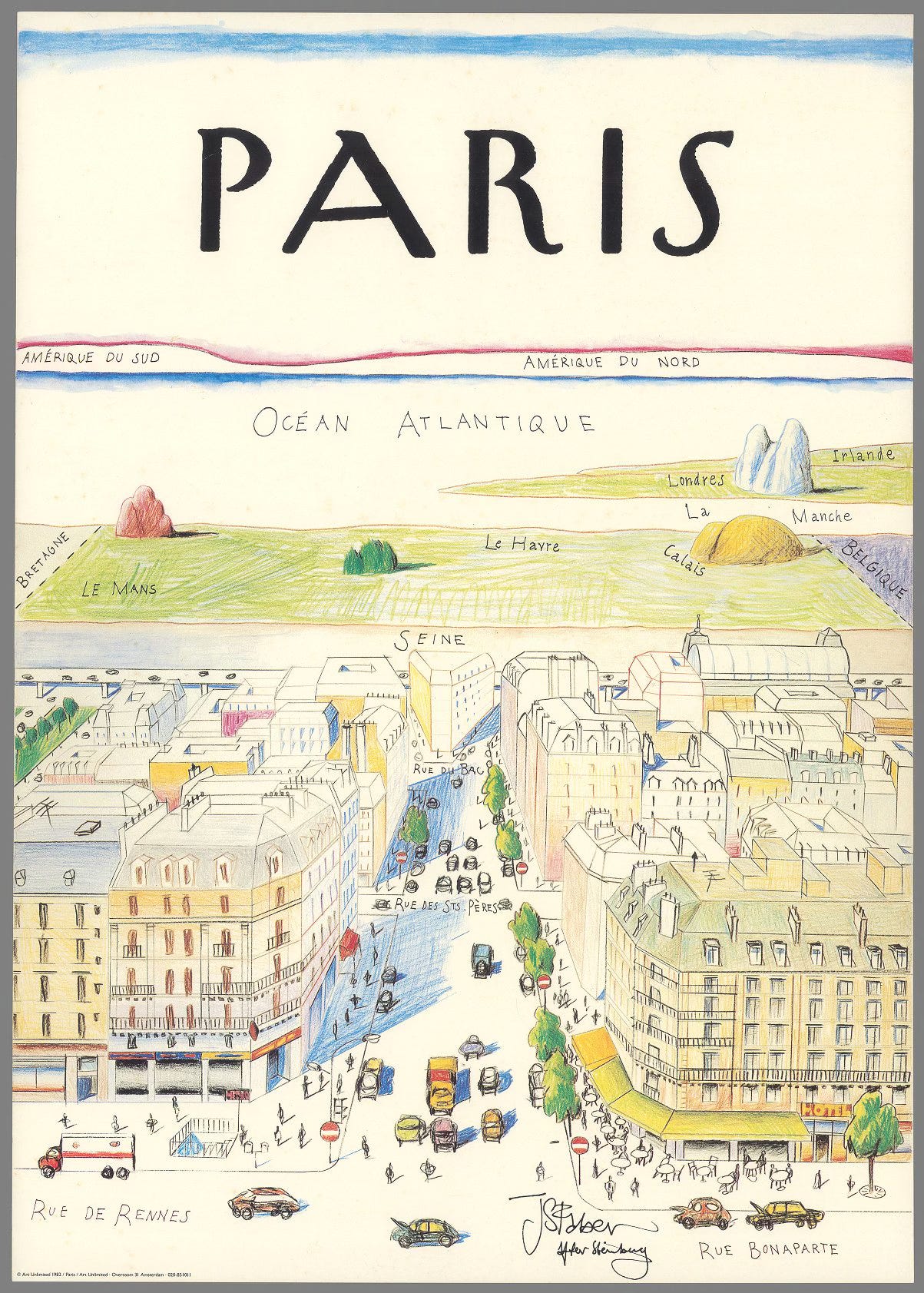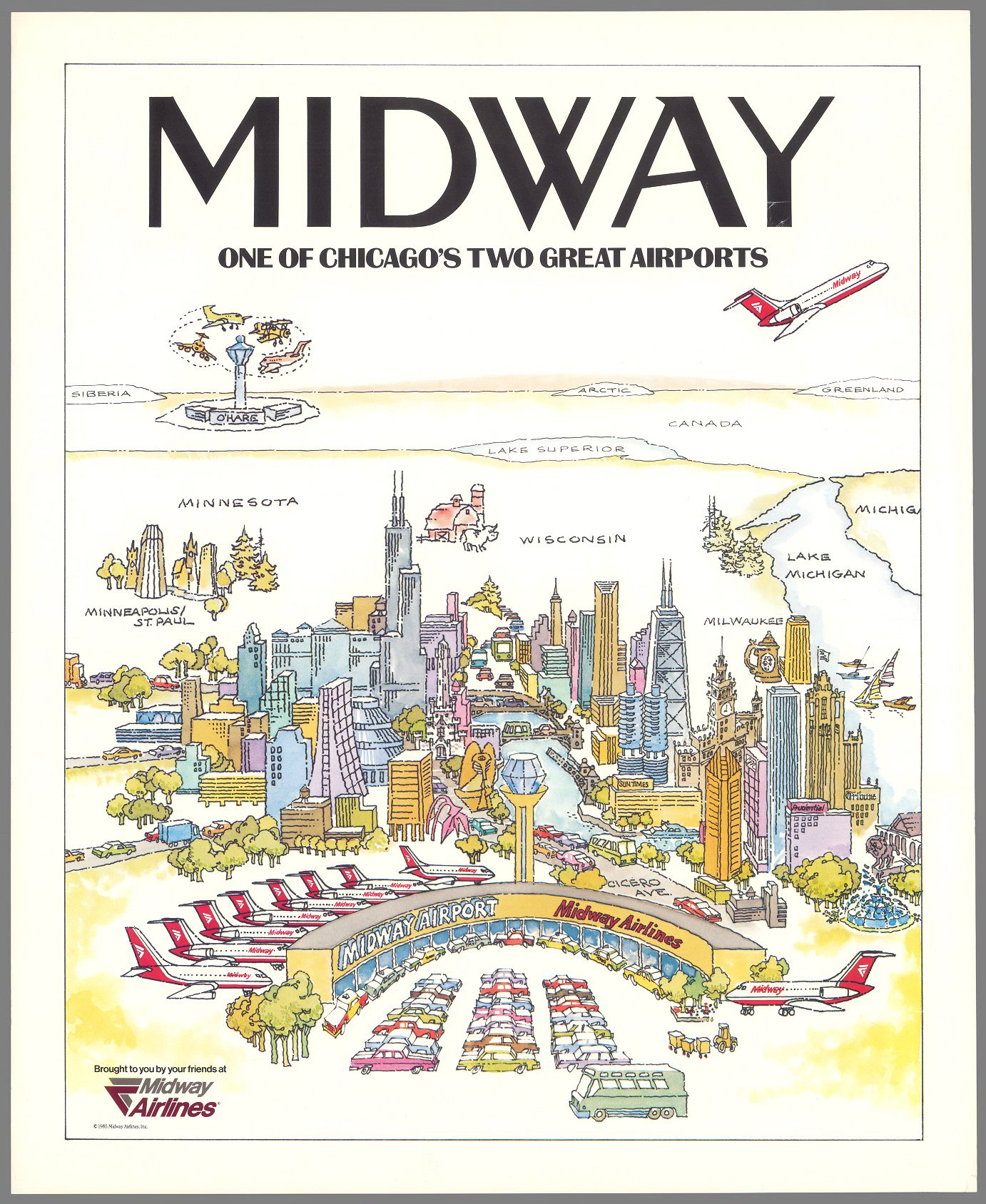In 1976, Saul Steinberg illustrated this famous cover for the New Yorker.
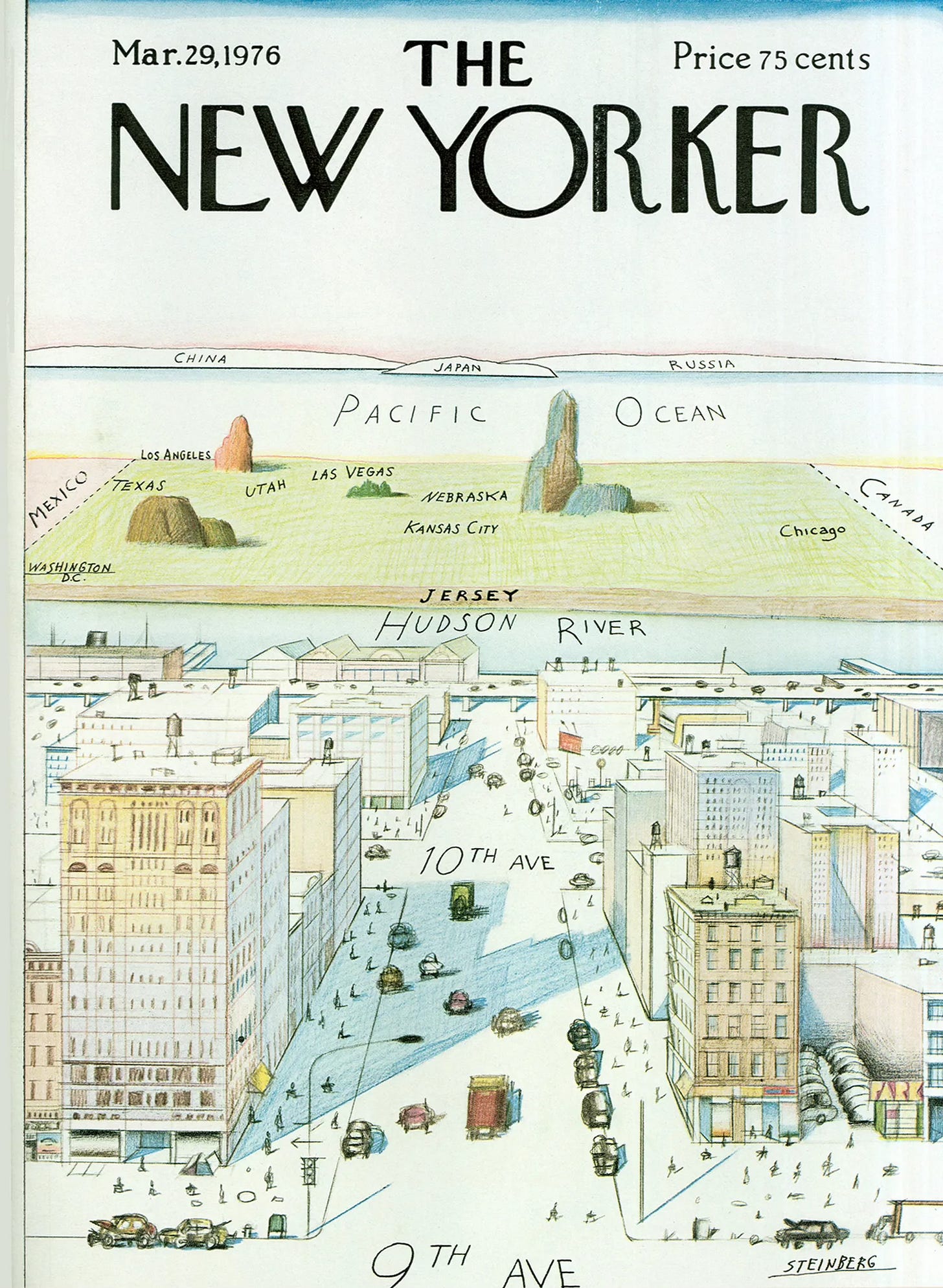
The humorously exaggerated myopia of a “typical“ New Yorker led to many imitations across the world. I found a bunch of examples on the David Rumsey Map Collection when looking for something completely unrelated. Here is Milwaukee.
Interestingly this version has a foreground as well as a background. It also features a better sense of geographic accuracy than the original though the China-Japan-Russia bit is basically duplicated. Look at tiny little Chicago! Saratoga Springs is an interesting addition though its location in Connecticut is a bit off.
Here is another example with mountains and skiers.
An international perspective, looking westward from Les Deux Magots.
Here is a looking east perspective. This one shows rival colleges. Perhaps ones with better geography departments as the distant locations of Heidelberg and Eton are flipped.
This one is probably my favorite. “One of Chicago’s two great airports“ exaggerating the centrality of Midway while implying that you need to travel almost to Siberia just to get to the chaos of O’Hare Airport.

